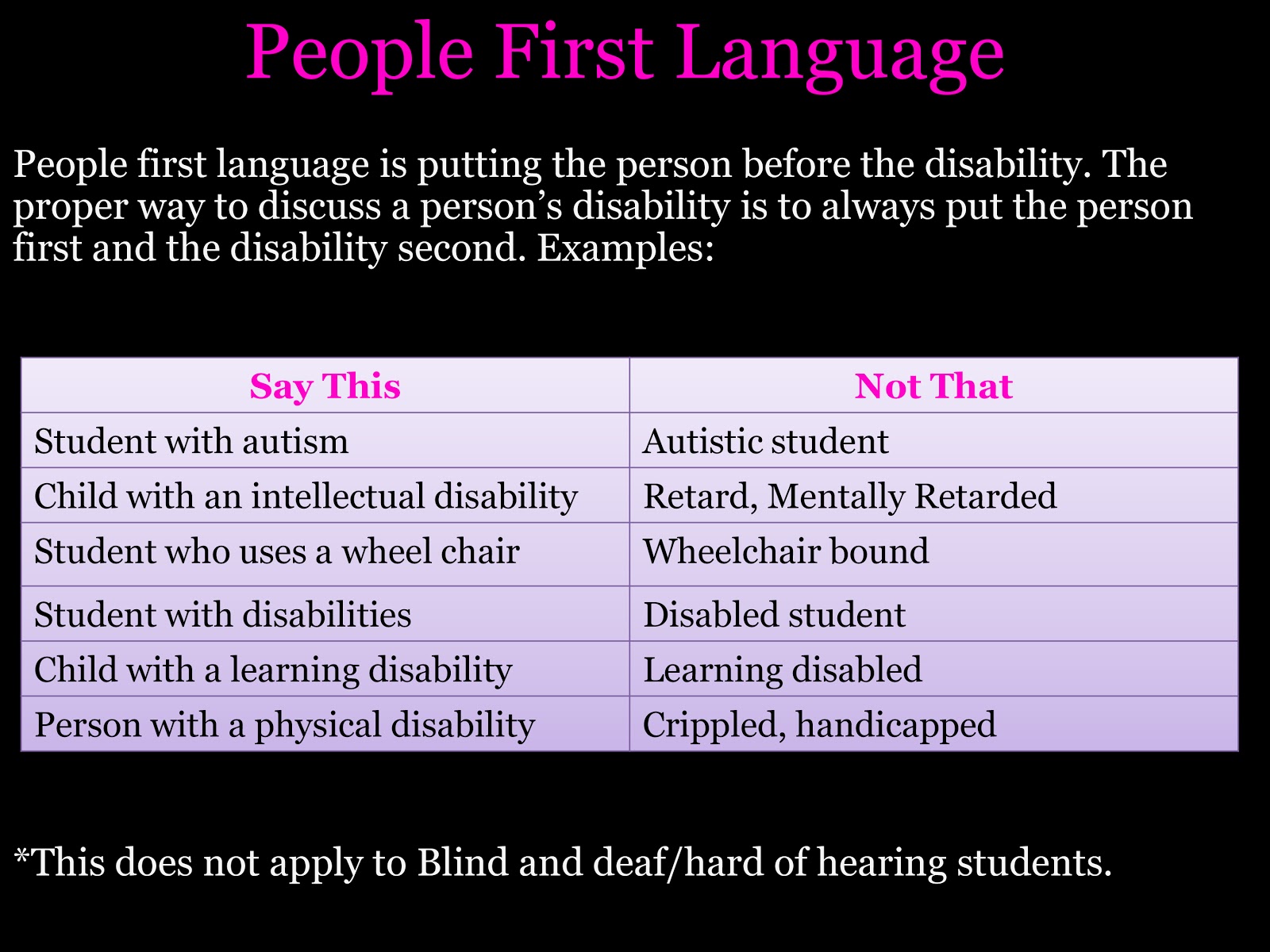People First Language is something that is extremely important to me. Once I started this blog, I knew at some point I would want to share this important information.
I was first taught People First Language in college. As a student, I thought it was “kind of” important. I appreciated learning about it but I thought, how important is it really?
Then I became a teacher. I met numerous students with disabilities and their families. And I quickly began to understand the importance of People First Language. My family can tell you, it is something extremely important to me. I am one of those annoying people that corrects my family members when they do not use People First Language. At each school I have worked in, I have provided professional development on using People First Language. I wish that I could provide the same training for every newspaper and news show around the world. Reporters and writers ruin sentimental, educational, or touching pieces by referring to the child continuously by their disability. Recently, we had a shooting at a nearby high school, Perry Hall. The child that was shot had Down’s syndrome. Every time you turned on the TV – they were talking about the “Down’s syndrome” student rather than referring to him as Daniel. Yes, I understood why the media wanted people to know he had Down’s Syndrome. BUT it was mentioned over and over again in the same article and the same news presentation. Instead of being referred to as his name, he was most always referred to first by his disability. I cringed each time I heard it. If the media had some training in how to talk about children with disabilities, their articles and video segments would have sounded not only more professional but more understanding of who Daniel was as a person.
What is this People First Language?
People First Language puts the student before their disability. When you talk about a person, you do not put a physical or personality characteristic before their name. For example, I wouldn’t call my husband, Glasses Kris. I would say, Kris wears glasses. It’s not how you would naturally talk about people. Yet, people talk about children with disabilities as if they are their disability. They call them: autistic, retarded, wheel-chair bound, handicapped, etc. It takes the disability and makes it the only important thing about the student. The student is a person and that is how they should be seen and spoken about. As a parent, I can only imagine how difficult it must be to constantly hear their child referred to as their disability. Why is it even important to mention in a conversation? It’s every day conversation – it isn’t. Yet people feel the need to always mention.
What do I do when I do need to talk about someone’s disability?
There are those times when it is necessary to talk or write about someone’s disability. As a special education teacher, this is something I have to do often. I stress the importance of People First Language to my general education teachers that teach students with disabilities. Especially when talking to parents or the student themselves.
People First Language is simple. Put the person first. Say a student with disabilities not a disabled student. Here are some quick examples. You can use these examples to understand how you would discuss a student that has a different disability than the ones that are listed.
Downloads Available
For today’s post, I have included a PowerPoint presentation and a PDF. This will allow you the opportunity to quickly share this information with staff and parents to provide some professional development. It was important to me to give you a ready-made presentation so that you can educate others as easily as possible.
To Download
Click the links
below to download the files. After the file opens, go to File, Download (or
CTRL + S).
below to download the files. After the file opens, go to File, Download (or
CTRL + S).
Files




